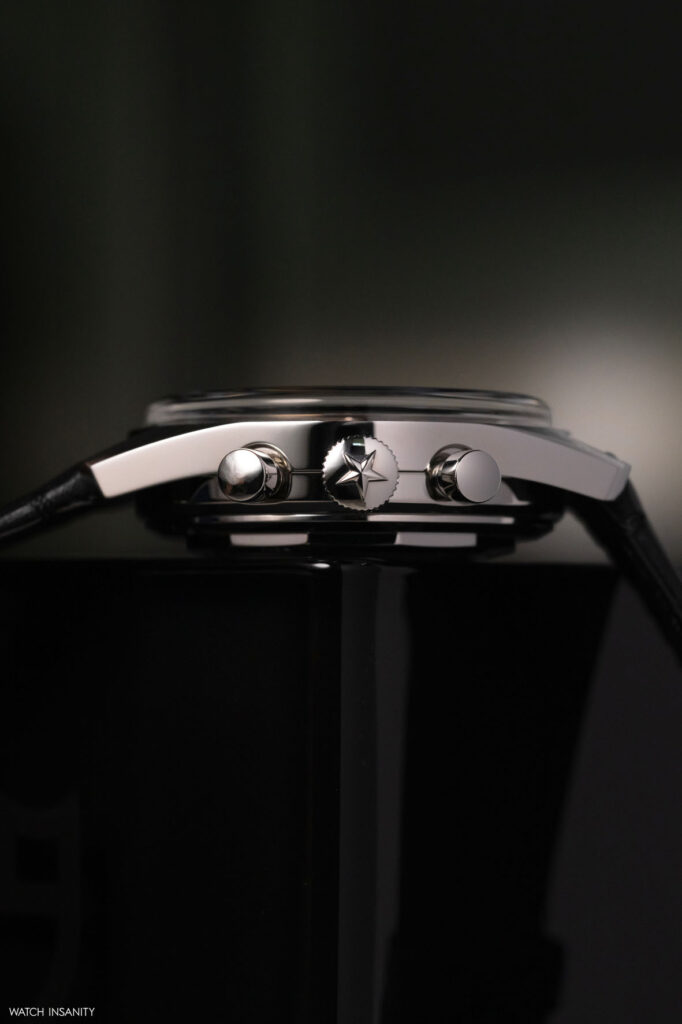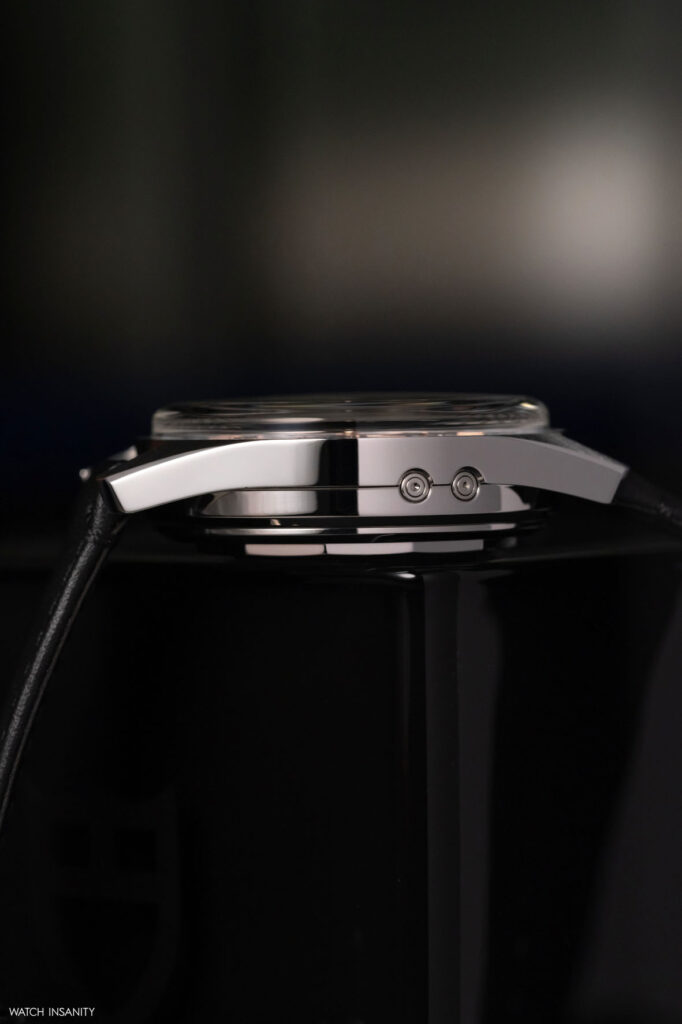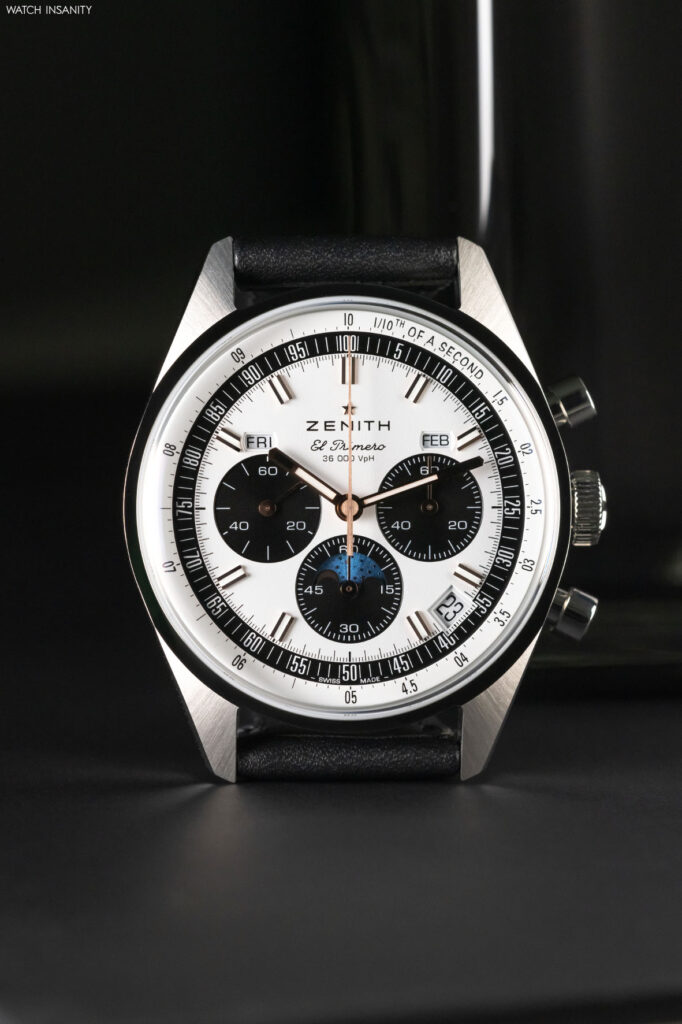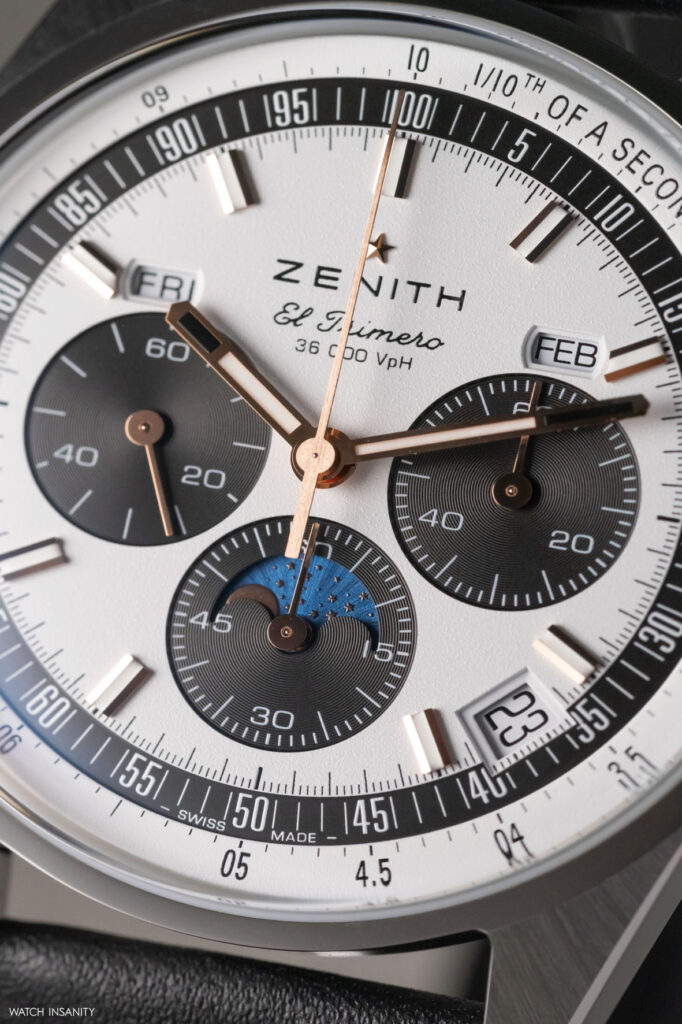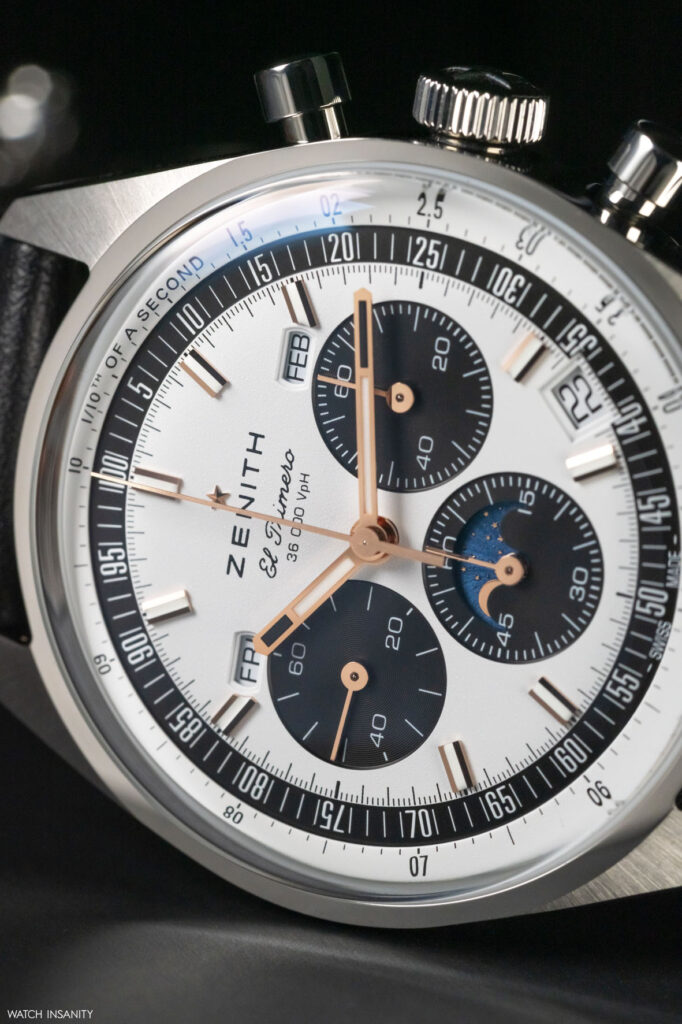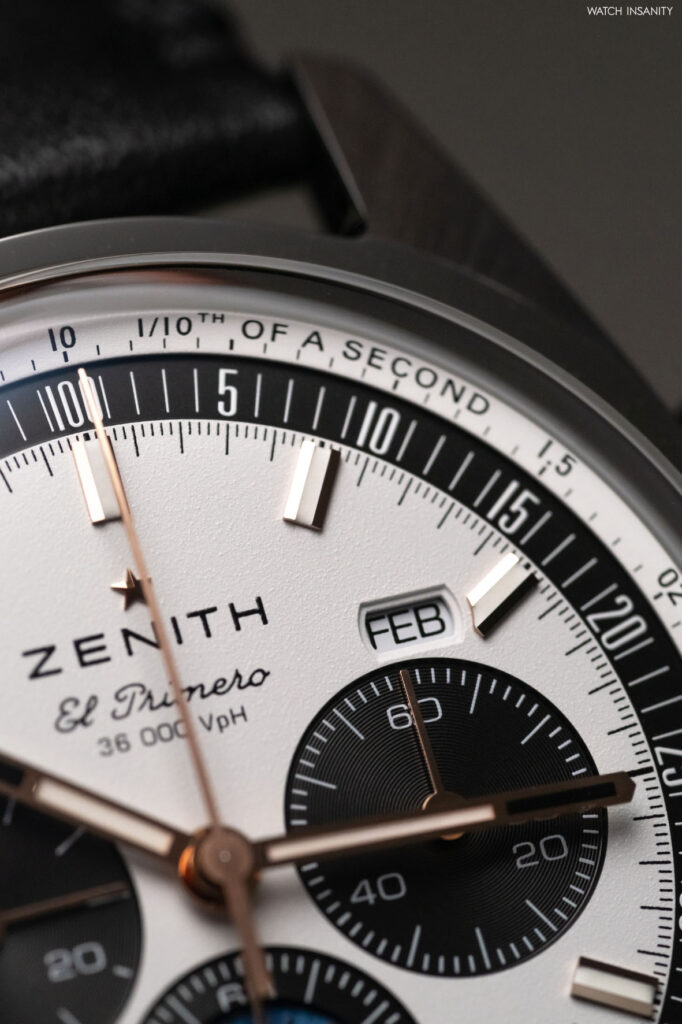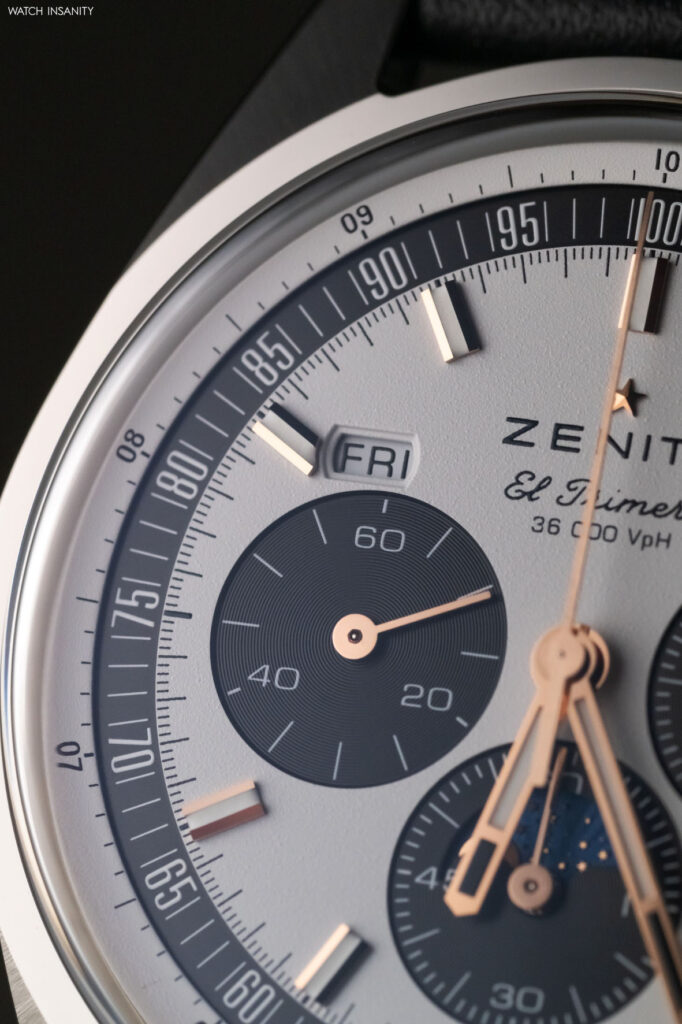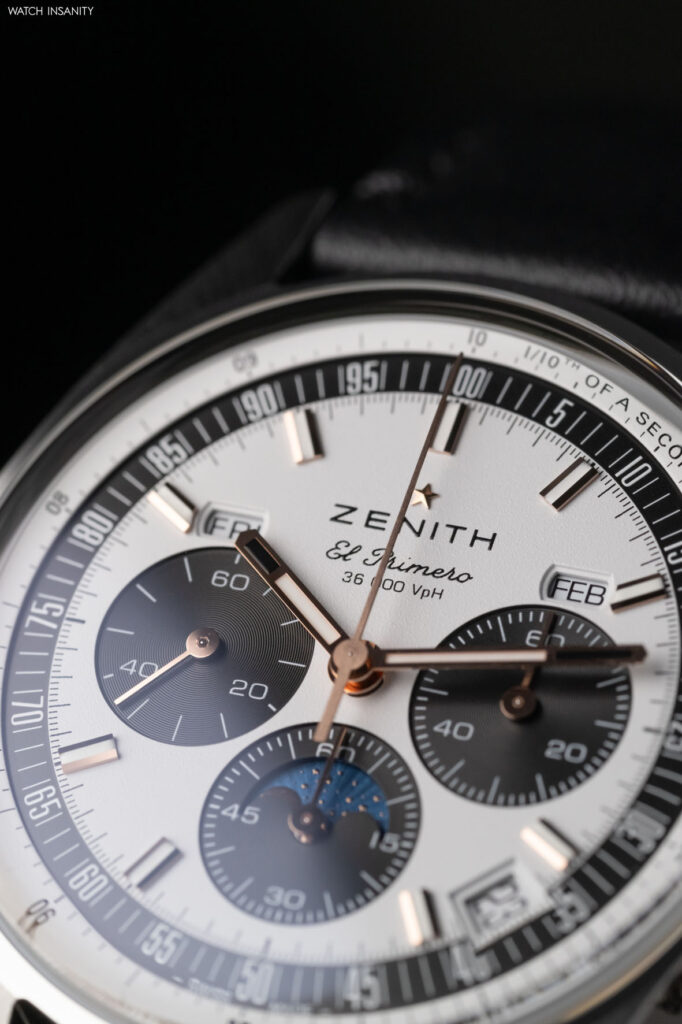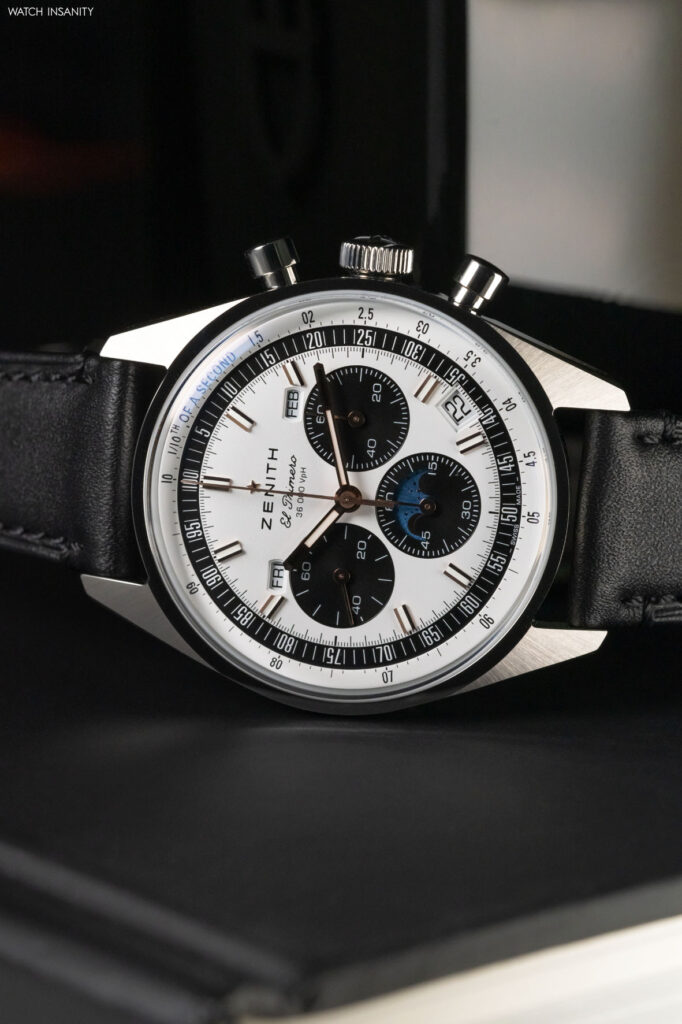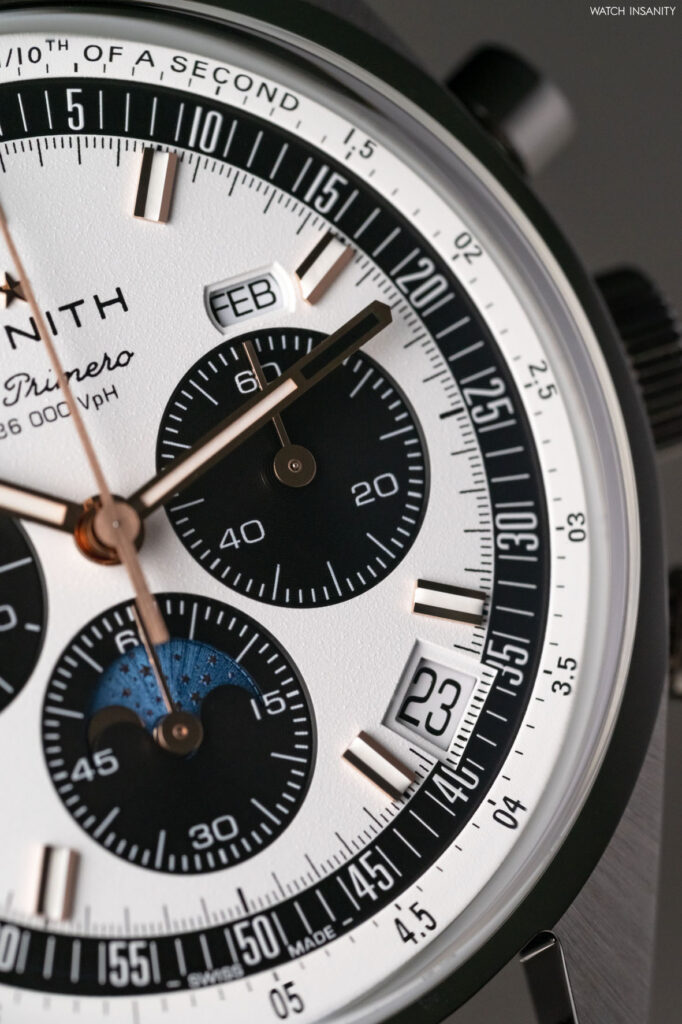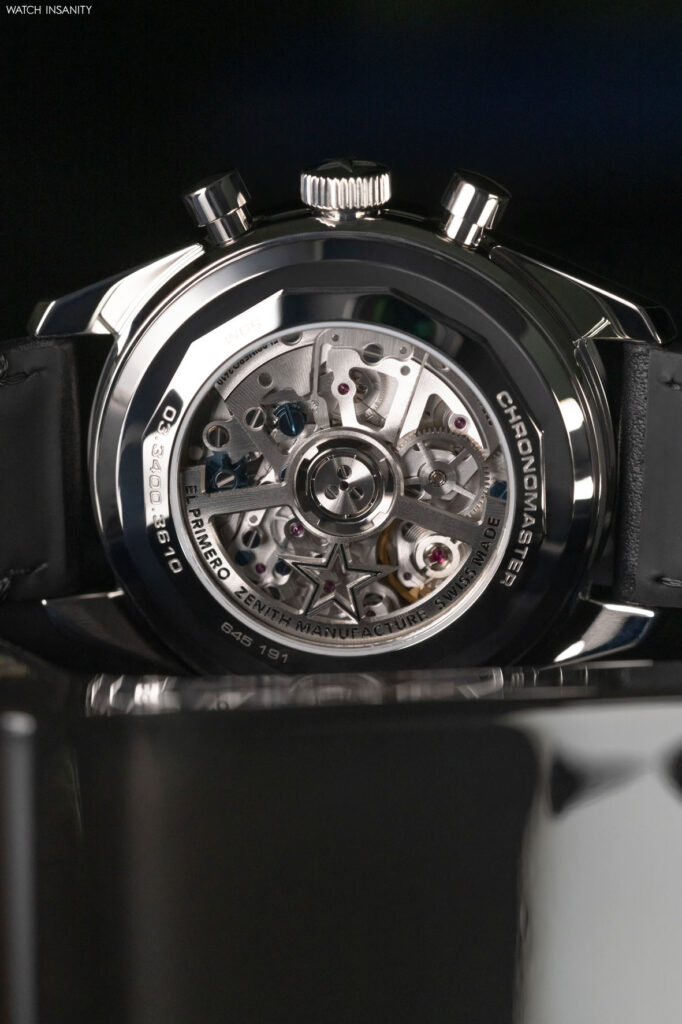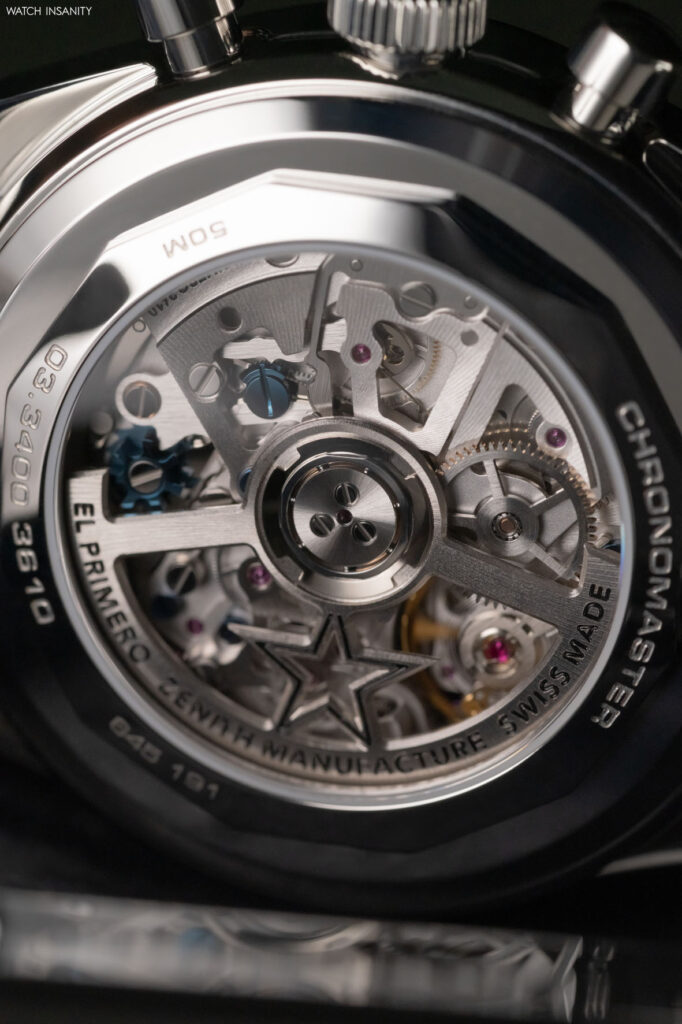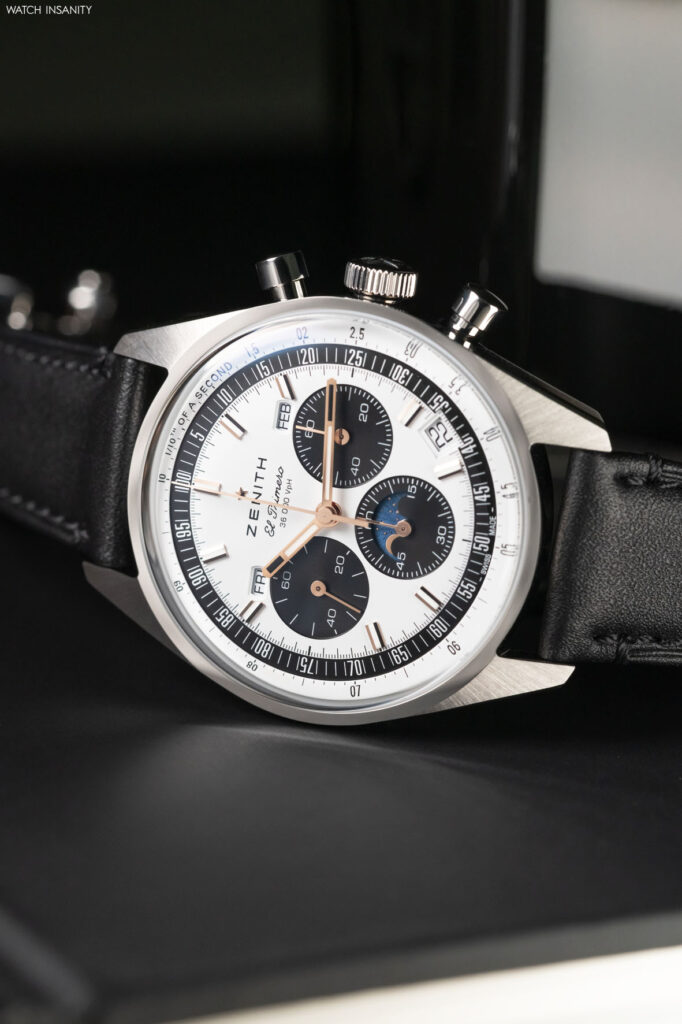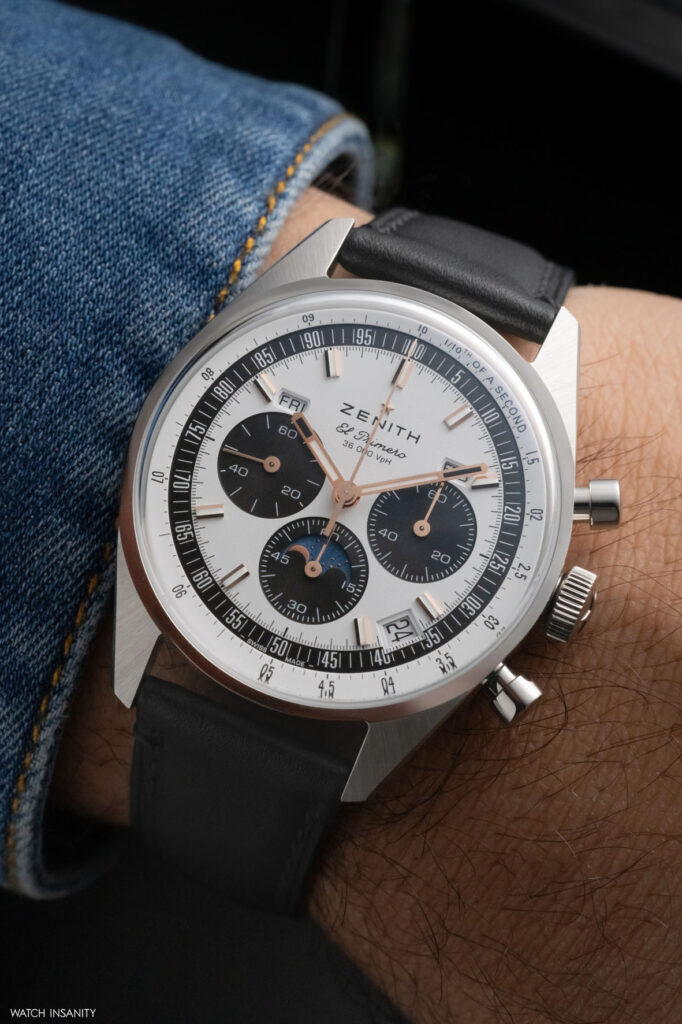Zenith Chronomaster Original Triple Calendar: paying homage to history
2 February 2024Even in watchmaking, there are so-called ‘sliding doors’. Even in a brand like Zenith. It is precisely in brands with an illustrious tradition behind them, made up of passion and excellence, that we find anecdotes that tell stories of watches which have immediately become legendary, and others that have taken longer to find their place in the sun. The fate of the new Zenith Chronomaster Original Triple Calendar is somewhat reminiscent of this path. Indeed, to retrace its origins, we must go back to the beginnings of the El Primero calibre, and to an unintended dualism between chronograph and triple calendar.
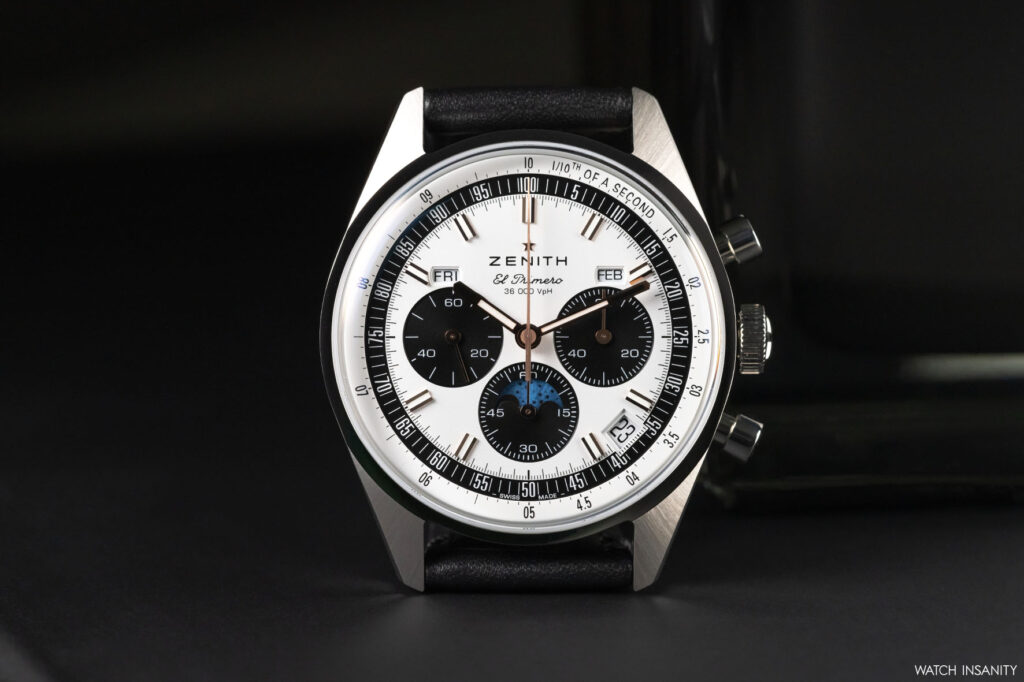
EVERYONE WANTED A CHRONOGRAPH
The year was 1970 and, only a few months earlier, the watchmaking world had been shaken by the Zenith revolution and its El Primero high-frequency chronograph. These were the years of the race for the first automatic chronographs; years of great ferment in terms of design and technical innovations – also in the wake of the success many brands were enjoying in the chronometry field with their involvement in Formula One.
In a world dominated by the quest for performance and speed, the chronograph represented a must-have, not only for motoring professionals. This is demonstrated by the large number of watches that entered the market in those years and are still legends today. Certainly, in this panorama Zenith was decidedly ahead of its time, so much so that it had designed its El Primero in such a way that it could accommodate the full calendar and moon phase functions already a year earlier. Two non-trivial complications, watchmaking symbols of previous decades.
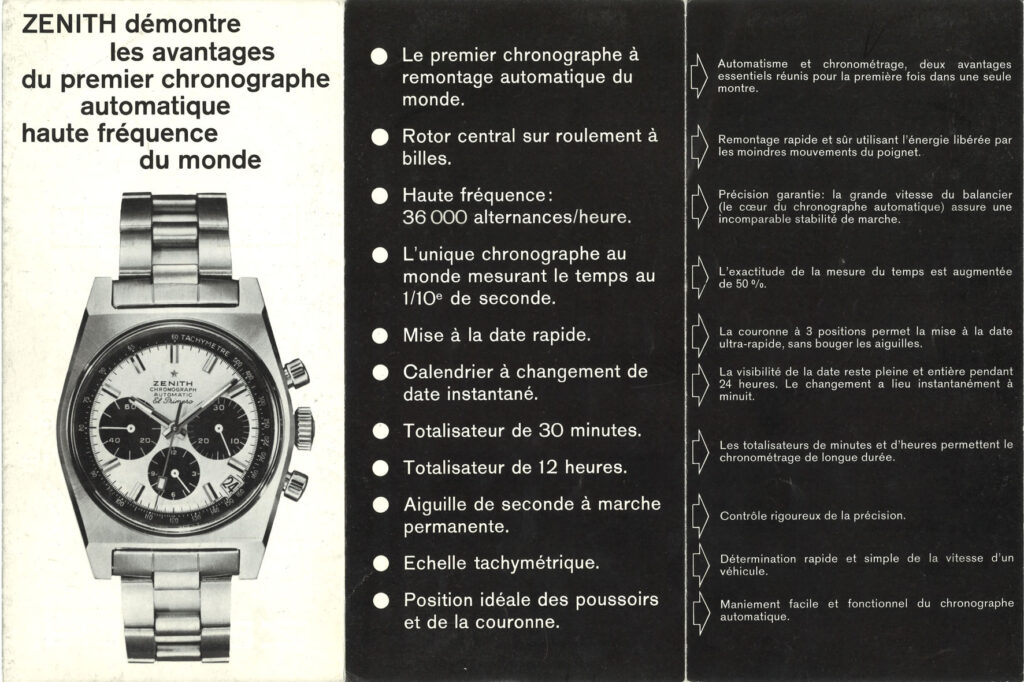
In the 1950s and 1960s, many brands introduced triple calendar models into their collections. There is no shortage of examples: Breitling, Heuer, Vacheron Constantin and, above all, Movado, which – in the early 1970s – tied its industrial history to that of Zenith. Strong with the El Primero calibre’s predisposition to include the triple calendar, Zenith produced a series of prototypes with this complication, 25 to be precise, using the A386 case. However, as mentioned, between the 1960s and 1970s, the market demanded chronographs and many maisons’ elite production was oriented towards that segment.
At Zenith, theyrealised this quickly: given the great success of the chronograph-only El Primero, the company decided to wait a few more years before putting a watch with the first version of the El Primero with a complete calendar on the market. ‘Sliding door’. If market trends had been different, perhaps today the brand’s icon would not be the chronograph but the triple calendar.
ZENITH FOCUSES ON DESIGN
Of course, history is not made with ifs and buts, not even in watchmaking. The certainty lies in the fact that today, the El Primero chronograph calibre is available to aficionados with a complete calendar and moon phases, dressed in Zenith’s elegant style: that of the Chronomaster Original, which becomes the Chronomaster Original Triple Calendar. Presented at LVMH Watch Week, it does not hide, but indeed it exalts, its roots. Its creation is based on the 1969 A386 model’s exact blueprint, borrowing its balanced proportions.
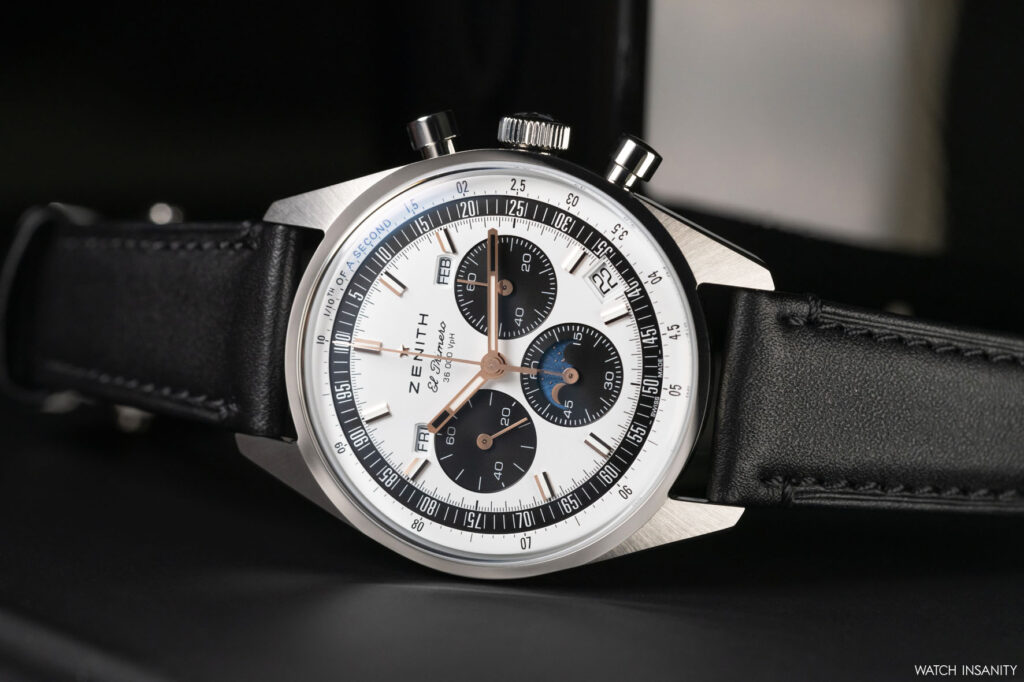
This is immediately apparent from a quick glance at the steel case, whose shape and dimensions (38 mm) follow those of the cases of the standard chronographs from the collection. The most evident difference, however, lies in the thickness which, in the case of the Chronomaster Original Triple Calendar,is necessarily greater given the simultaneous presence of the chronograph, triple calendar and moon phases. Zenith’s stroke of genius, however, lies in the way they have managed these extra millimetres so as not to make the watch look excessively massive.
Instead of making the caseband thicker, it leaves the vertical sides unchanged and deals with the extra millimetres by using a rather thick caseback. While aesthetically this solution may not appeal to everyone, it has an undoubted practical advantage; the caseback’s additional protrusion is located below the line of the lugs, so that it rests in the slight hollow between the wrist bones: in this way, when worn the watch sits well and, visually, its profile does not appear any different from that of the El Primero in chronograph version.
CHRONOMASTER ORIGINAL TRIPLE CALENDAR: THE DIAL
Having said that, the other major work done by the brand on the Chronomaster Original Triple Calendar concerns the dial, which preserves the classic three-counter layout and many of the visual elements that characterised the A386. For the counters, in fact, it was not the configuration with the discs partially overlapping or in different colours that was chosen, but one with the discs separated and placed lower than the dial. The star of our exclusive photo shoot features those in black, with a concentric finish, in the classic panda configuration contrasting with the opaline dial.
At the dial’s edges are the1/10th of a second scales (let’s not forget that the 36,000 vib/h El Primero calibre beats inside the case) with the applied facetted indexes filled with SuperLuminova inside. What adds to their aesthetic impact is the gold plating, visible on their inclined sides, which recalls the same finish present on all the hands, both on the central ones and on those of the chronograph counters. The stylistic homogeneity is clearly evident.
The highlight of the watch, of course, is the triple calendar. The display chosen by Zenith is rather classic. At 4:30 we find the date window, in a position that is as usual as it is controversial on the Chronomaster Original. For the day of the week and the month, the arrangement found on so many mid-century triple calendars was adopted: two windows placed above the chronograph counters, at 10 o’clock and 2 o’clock respectively. In devising them, however, Zenith’s designers did not indulge in banality.
Instead of creating simple rectangular cut-out windows, on both elements the windows are characterised by a subtle oval curvature along the shorter sides. A delicate, almost imperceptible curvature that allows them to match with the overall architecture of the dial, which is predominantly curved. The triple calendar indications can be adjusted using two corrector pushers located on the caseband at 9 o’clock. Although they are well recessed, their presence somewhat interrupts the beautiful polished line of the case side.
The moon phases are set at 6 o’clock inside the chronograph minute counter, and can be seen through the two-lobed window. There are two elements to highlight on this complication. One is the sky: its indigo blue colour, not uniform but worked with a soleil effect, is the only colour stroke different from the white, black and gold we find on the dial. That gold touch that recalls the moon and the stars. The stars are the other element to observe: small, yes, but worked with the five-pointed shape that recalls the Zenith logo. When details make the difference…
ZENITH EL PRIMERO: A CERTAINTY
All the indications on the dial of the Chronomaster Original Triple Calendar are powered by the in-house Calibre 3610. This movement, created based on the Calibre 3600, also employs a high-performance version of the chronograph complication, using El Primero’s famous high frequency. It powers the motion of the central chronograph hand, which makes a complete circuit every 10 seconds for more accurate split-second readings.
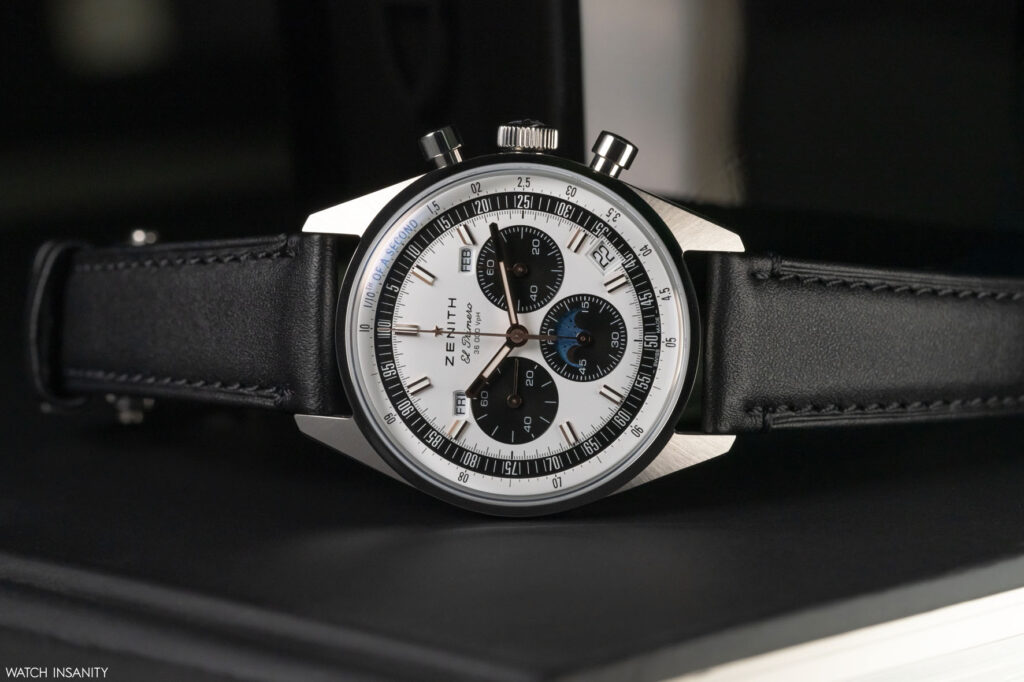
As is well known, the El Primero 3610 works on a high frequency (5 Hz or 36,000 vibrations per hour) and, with these numbers in mind, the 60-hour power reserve constitutes an excellent performance. The handling of the triple calendar and chronograph indications by the self-winding calibre has been made visible through the sapphire glass back.
This choice was also dictated by the need to showcase the high quality of the movement’s finishing, one of the Chronomaster Original Triple Calendar‘s strengths. The skeleton bridges sport a mix of brushed surfaces, the plates are matt, contrasting sandblasted, and the screws are blued. Also blued is the chronograph column wheel, which, together with the oscillating weight, is the spot where the observer’s eye most often falls.
Speaking of the oscillating weight: it is skeletonised and proudly bears the star shape, Zenith’s emblem. Here, too, the Maison’s craftsmen have not spared their efforts on the finishing, alternating satin-finished surfaces with mirror-polished corners.
BRACELET OR STRAP?
The watch is available with both options. The three-row steel bracelet, whose polished (central link) and satin (side links) finishes echoe the alternating finishes of the case, is very beautiful. The strap is black, in calfskin leather and with a folding clasp.
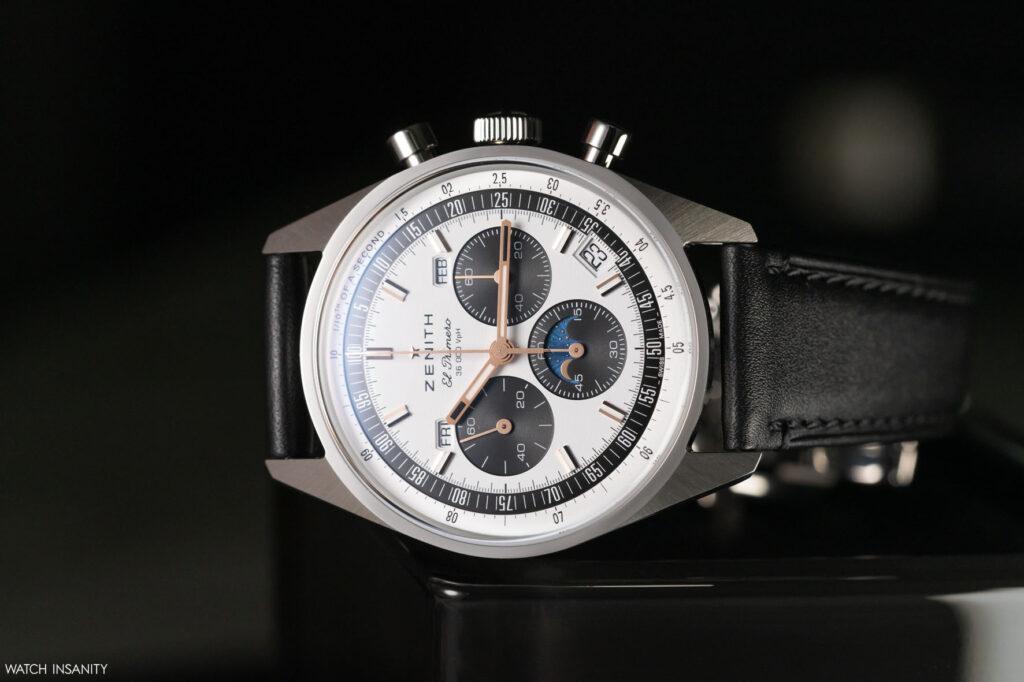
In addition to the version featured in our photo shoot, the Zenith Chronomaster Original Triple Calendar is also available with a slate grey soleil or olive green soleil dial, the latter being sold only at Zenith boutiques. These two references can also be chosen with a steel bracelet or a blue (grey dial) or green (green dial) leather strap. As is obvious, the choice of strap or bracelet influences the price: 14,000 euros with a strap, 14,500 euros with a bracelet (who knows what it would look like with a scaled Gay Frères…). Same prices also for the boutique edition.
In short, the Chronomaster Original Triple Calendar is further proof of how few haute horlogerie brands have the same ability as Zenith to work on re-editions in a precise and faithful manner. Not by creating cold, soulless copies, however, but by preserving the classic charm of a rich tradition and of a strong spirit that the leadership of Julien Tornare – who recently joined TAG Heuer – has been able to enhance in the best possible way. Beyond the ‘sliding doors’ that destiny opens and closes, even in watchmaking.
By Davide Passoni

